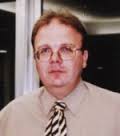Indexed In
- Open J Gate
- RefSeek
- Hamdard University
- EBSCO A-Z
- OCLC- WorldCat
- Publons
- International Scientific Indexing
- Euro Pub
- Google Scholar
Useful Links
Share This Page
Journal Flyer

Open Access Journals
- Agri and Aquaculture
- Biochemistry
- Bioinformatics & Systems Biology
- Business & Management
- Chemistry
- Clinical Sciences
- Engineering
- Food & Nutrition
- General Science
- Genetics & Molecular Biology
- Immunology & Microbiology
- Medical Sciences
- Neuroscience & Psychology
- Nursing & Health Care
- Pharmaceutical Sciences
Editor-in-Chief

Dr. Filippos Vallianatos
Editor-in-Chief
Professor
University College London, Technological Educational Institute of Crete Laboratory of Geophysics & Seismology, UK
Biography
Dr. Filippos Vallianatos is a Professor of physics from Geophysics-Solid Earth Physics, Technology Educational Institute of CRETE, School of Natural Resources & Environment, Department of Geoenvironment, Laboratory of Geophysics & Seismology & Senior Research Fellow in Geophysics. He received his degree in Physics. With Honours, from University of Athens, Physics Department from 1981-1985. He has done his PhD in Geophysics-Solid Earth Physics (University of Athens, Physics Department). The title of my PhD thesis is "Magnetotelluric investigation of the electrical conductivity in the areas of Thiva and Ioannina (Greece)".1985-1989. He has done his Postdoctoral researcher, Department of Solid Earth Physics, University of Uppsala from 1989-1990. He collaborated with the Dept. of Seismology of the University of Uppsala for the installation of seismological and magnetotelluric stations at various sites in Greece (1986).
Research Interest
Telluric & electromagnetic earthquake precursors, Electromagnetic wane propagation in geostructures with stochastic or fractal properties, Conductivity structure of the Earth using Electromagnetic waves, Thermodynamics of the Earth Interior, Seismic Hazard and Environmental Seismology, Non linear dynamics in seismology and geophysics, Environmental Geophysics and GeoHazards.

Dr. Saumitra Mukherjee
Editor-in-Chief
Professor, Department of Geology & Remote sensing
Jawaharlal Nehru University, School of Environmental sciences, , India
Biography
Have 25 years experience in Remote sensing Applications in Geosciences.
2006-till date-Professor (Geology & Remote sensing) SES/JNU • 2004-2005.Visiting Professor, Earth& Ocean Sciences, The University of Liverpool,UK • 1998-2006-Associate Professor(Remote sensing) SES/JNU • 1992-1998 Assistant Professor (Remote sensing)SES/JNU New Delhi • 1989-1992: Scientist-C, Remote Sensing Applications Center, UP, Lucknow. • 1985-1989: Hydrogeologist Central Ground Water Board, Calcutta.
Research Interest
Earth Observation Applications for Water Resources Assessment and Management. (Remote sensing and GIS applications in Ground water Exploration, Rainwater Harvesting. Early warning of Natural Hazards and its relation with Water resources(Tornado, Cyclone, Earthquake, Tsunami, Snowfall, Forest Fire). Research guidance and publications in the following areas Monitoring, analyzing, and quantifying components of the water cycle Monitoring/Modeling real or near-real time surface and/or subsurface hydrological processes Analyzing interactions of land surface and atmospheric processes Investigating wetland dynamics Monitoring, forecasting and managing flooding and droughts Monitoring land use/cover change and impact on hydrological processes Determining effects of human activities on both the quantity and quality of water Developing products for use in integrated water resources management. Used Satellite data: IRS,LANDSAT, SPOT (INDIA, UK, and AFRICA), IRS (INDIA), RESOURSESAT and LIDAR Data (UK), SOHO data of Sun-Earth Environment.
Dr. Arthur B. Weglein
Editor-in-Chief
Professor, Department of Physics
University of Houston, USA
Biography
Arthur B. Weglein holds the Hugh Roy and Lillie Cranz Cullen Distinguished University Chair in Physics. He is a professor in the Department of Physics and the Department of Earth and Atmospheric Sciences. Weglein is the Director of the Mission-Oriented Seismic Research Program, a research consortium supported by the major oil and service companies in the world. Professor Weglein served as the SEG Distinguished Lecturer in 2003, and was awarded the SEG’s Reginald Fessenden Award in 2010. In 2008 he received the Distinguished Townsend Harris Medal from the City College of the City University of New York for his contributions to exploration seismology. He is the co-author ( with Bob Stolt) of a two volume graduate textbook on “Seismic Imaging and Inversion” published in 2012 by Cambridge University Press.
Research Interest
Research and development of new seismic technology that enables the exploration and production of hydrocarbons. A prioritized set of problems is identified, whose solution would have the highest positive impact. Fundamental research for new concepts, and subsequent algorithm development and synthetic and field-data testing, all aimed at solving these specifically chosen problems; hence, "mission-oriented" seismic research.

